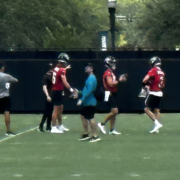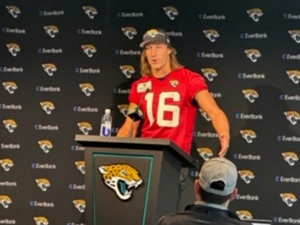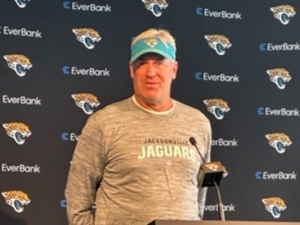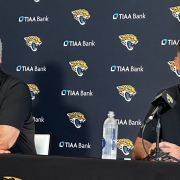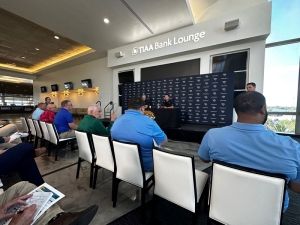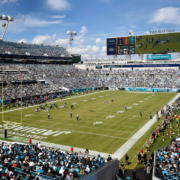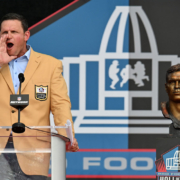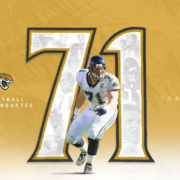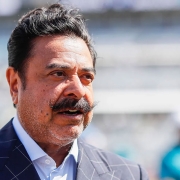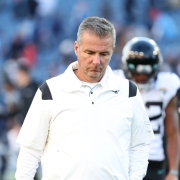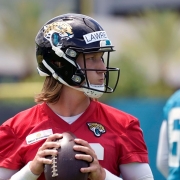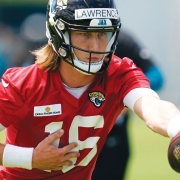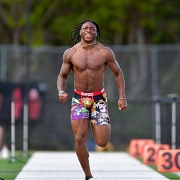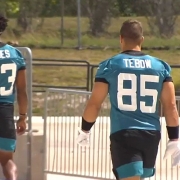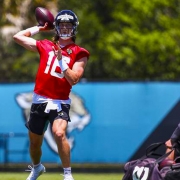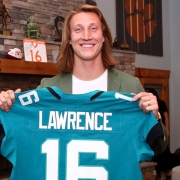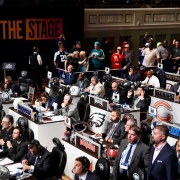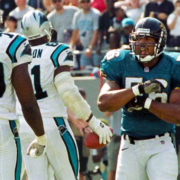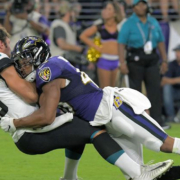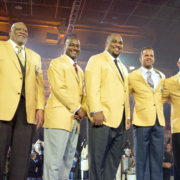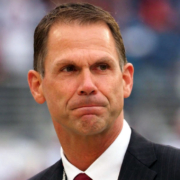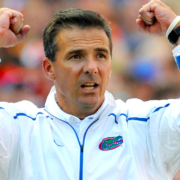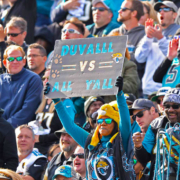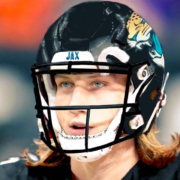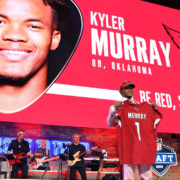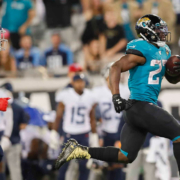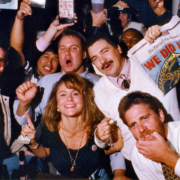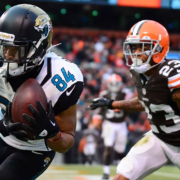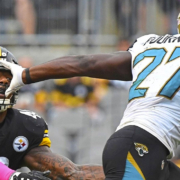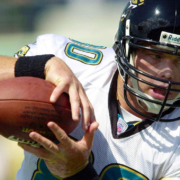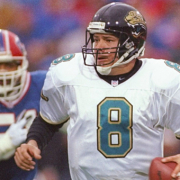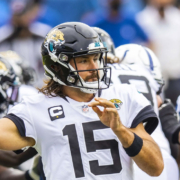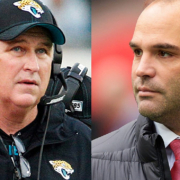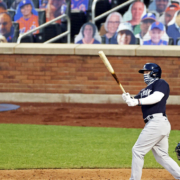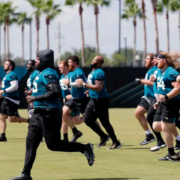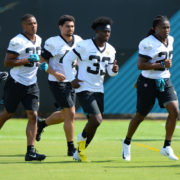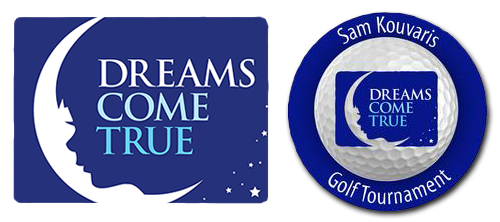There’s a room down at the stadium that’s highly guarded. It doesn’t contain cash or tickets or merchandise. No, it holds something much more important: Information.
It’s the room that holds the Jaguars draft board. A compilation of the past four years or more of scouting, evaluating, interviewing, discussing, arguing and just plain wondering about the college players eligible in this week’s NFL Draft.
Every team has a secret room. We get a little snippet of video of that room every year after the first round selection is made. A bunch of hand shaking and back slapping, congratulating each other or getting “their guy.”
Access to that room is coveted, everybody wants to be in there. So, despite the number of scouts, personnel people, coaches and administrators employed by each team looking for players from all corners of the earth, the league will limit the number in that room this year to just twenty-four.
There are the privileged few on each team that get to know what names are on that board, which names have been eliminated and who the most coveted player is among the nine-hundred or so the team has looked at leading up to that year’s draft.
And don’t think the secretive nature is overblown. There’s a security guard, ID badges to gain access and even one of those keypads that scrambles the numbers under a hood where you enter the ‘secret code’ to gain entry.
When Shad Khan bought the team to start the 2012 season, he found out how serious they were about keeping their draft board, and even their first pick a secret. Even from the owner.
“I was a new owner, so I didn’t know how it worked,” he explained. “I was curious about the process and who we were considering with the first pick. When I went to the guys I had in charge they were very ‘close to the vest’ even with me. They marched me down to a secure room, locked the door, looked around and opened a notebook for a few seconds to show me a name. I figured I was the owner and I wanted it to be different than that.”
For Khan, that seemed more like paranoia than closely guarded information, so he changed out the decision-makers on the Jaguars after his first year of ownership.
That 2012 class is considered one of the worst in the Jaguars history, headed by Wide Receiver Justin Blackmon with the fifth pick overall. A supremely talented player, Blackmon doubled the Jaguars offensive production when he was on the field, but his off-field issues with marijuana use kept him out of the lineup and eventually and out of the league in about a year and a half.
And as much time, energy, miles traveled, millions of hotel and airline points amassed crisscrossing the country, the draft process is still an inexact science.
There are whiffs and there are surprises on both ends of the spectrum. The Jaguars have had both.
Just last year, they signed running back James Robinson as an undrafted free agent. He excelled in training camp so much it allowed them to move past Leonard Fournette and install Robinson as the starter. In fourteen games he amassed the most yards from scrimmage in NFL history by an undrafted rookie.
How did everybody miss him? Robinson was an All-American on some lists, was the dominant running back in his conference and was well known. Yet, every team over seven rounds passed.
Different boards have different values on players. What their needs are, how a player might fit into their system. It’s all a jigsaw puzzle that each team fills in their own way, with their own process.
Even the Jaguars didn’t have Robinson as a draft pick, and they were only one of two teams to contact and sign him the minute the draft ended.
“Sometimes you’re not right until a few years out and sometimes you’re not right until the guy goes somewhere else because they fit him better or he gets healthier or he just develops,” said one team’s scouting director.
That was the case for the Jaguars in their initial draft. A fourth round pick they made in 1995 didn’t pay off until three years later.
When the Jaguars arrived for the second draft day in 1995, there was one glaring name left on their board from the day before. That year the league conducted rounds one through three on day one. As an expansion team, the Jaguars had two picks per round. They took Tony Boselli with their first overall pick and followed that up in the first round with James Stewart. Brian Demarco and Bryan Schwartz were taken in the second round and Chris Hudson in the third.
“When we walked into the draft room on the second day, there was one name left from day one that hadn’t been picked,” said then Head Coach and General Manager Tom Coughlin. (Although I’m sure Coughlin slept in his office the night before.)
“We got together, and I said, ‘We have this guy graded so much higher than the fourth round, we have to take him,” Coughlin added.
And with that discussion short and sweet, the Jaguars selected Quarterback Rob Johnson from Southern Cal with the first pick of the fourth round, ninety-ninth overall. Considered a well-regarded backup to Mark Brunell, Johnson only played eight games for the Jaguars, including five in 1997 with one start.
But it was that one start, in the opener against Baltimore, where Johnson shined. He returned to the game in the 3rd quarter after a badly sprained ankle knocked him out of the lineup, and led the Jaguars to victory.
On that one game, Johnson’s value skyrocketed, and he was traded to Buffalo the next February for the Bill’s first round pick, ninth overall in 1998. And that pick turned into Fred Taylor.
So, while having some value while he was here, Johnson’s value jumped up exponentially, three years later, when the Jaguars were able to draft one of their best players ever using the pick they acquired for Johnson.
The idea of players rising or falling on a draft board late is a media invention. Teams will have between 125 and 150 names on their draft board and as players are selected those names come down. A player’s evaluation doesn’t jump from one round to another at that point. The mantra: Trust the board.
“I think when you look at the amount of time we’ve spent organizationally from a scouting perspective, the personnel staff, the coaching staff, the amount of time we’ve spent together to build this board, I think it becomes very easy, no different than coaching,” Jaguars General Manager Trent Baalke said this week. “On Sundays, it’s easy to call plays when the preparation’s right. I think the same thing with the draft. I think we’re going to be very prepared, feel very good about where we’re at, so trusting that board, that’s how you make a living. You have to trust it. When you don’t trust it, that’s when you make mistakes.”
“Let the board talk to you,” is the phrase legendary team builder Bill Polian said he adopted during his Hall of Fame career.
“The board you put up in December and after the bowl games in January is the most accurate board,” he added. “And it’s even much more accurate four years later. Why? Because the scouts are grading them as football players. Absent the hype, the combine, the nonsense that flies around in the media. That’s the cleanest board.”
The movie “Draft Day” in 2014 depicted a lot of subterfuge and back-room dealing as the picks came up. Polian says nothing could be further from the truth.
“It’s not that crazy pacing up and down, stock trading atmosphere,” he explained. “Once you close the board, which was sometime last week, let the board speak to you, that’s why you did all this work. Even how the movie depicted the GM’s talking to each other. It’s 180 degrees the other way, almost every conversation ends with, ‘Good luck, have a good day.”
“The only thing accurate about that movie is you do eat a lot of really bad food on draft week,” he added with a laugh.
Completely new to the process, Jaguars Head Coach Urban Meyer admits it’s been a steep, three-moth learning curve, but he’ll have his own way of figuring out how it works.
“I’m a control nut and an organizational nut, so I want to make sure that—I want to know where people are sitting, I want to know what camera, what we’re going to be looking at on the screens,” he said of what will give him a comfort level leading up to the actual draft day process. “At this point, we’ve had a couple dry runs, but we’re going to go in great detail early next week about exactly how it takes place. So, I’ll feel much better after that.”
Baalke calls the process on draft day, “fluid,” knowing things can change in an instant.
“If we’re in a situation at 25 (the Jaguars second pick in the first round) where the board says let’s trade back two or three spots, and that becomes available, that’s an option, you pursue it,” he said.”
Every team knows they’ll have to adjust to surprises and disappointments as the draft unfolds. The Jaguars had that happen in 2019 when Josh Allen was still on the board when they had the seventh pick in the first round. Then General Manager Dave Caldwell said in no scenario they had run was Allen still available at seven, so they took him immediately.
“You try to kind of get a feel for how the board is going to go around the league, kind of work through all the scenarios with potential trades,” Broncos president of football operations John Elway told. ESPN’s Jeff Legwold. “Just make sure you’re ready to adjust and move and feel good as an organization about your evaluations. And in the back of your mind, you kind of know there is no predicting what everybody is going to do — the curveball is coming.”
And despite all of the work, sometimes teams have their own ideas of what else might help.
“Ron Wolf would always let me put something on the draft board that was blessed by the pope,” said Bryan Broaddus, who worked in the scouting departments of three different teams during his career. It was an unusual draft board addition the Hall of Fame executive allowed.
“The item was something small enough it could fit in a plastic bag, but it had a papal blessing. “After the first year we did it, it was just kind of accepted after that. You’ll take all the help you can get, and it went on the top of the board.”
“Never touch the card,” Polian said when I asked if there was anything unusual about his draft rooms. “That was our superstition. When it’s up on the board, don’t touch it. If you within seven or eight picks of a guy you like, don’t mention the guy’s name and don’t ever touch the card!”

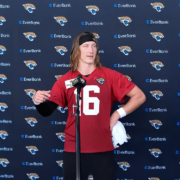
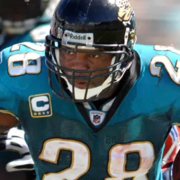



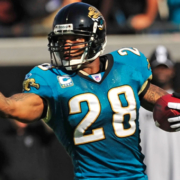
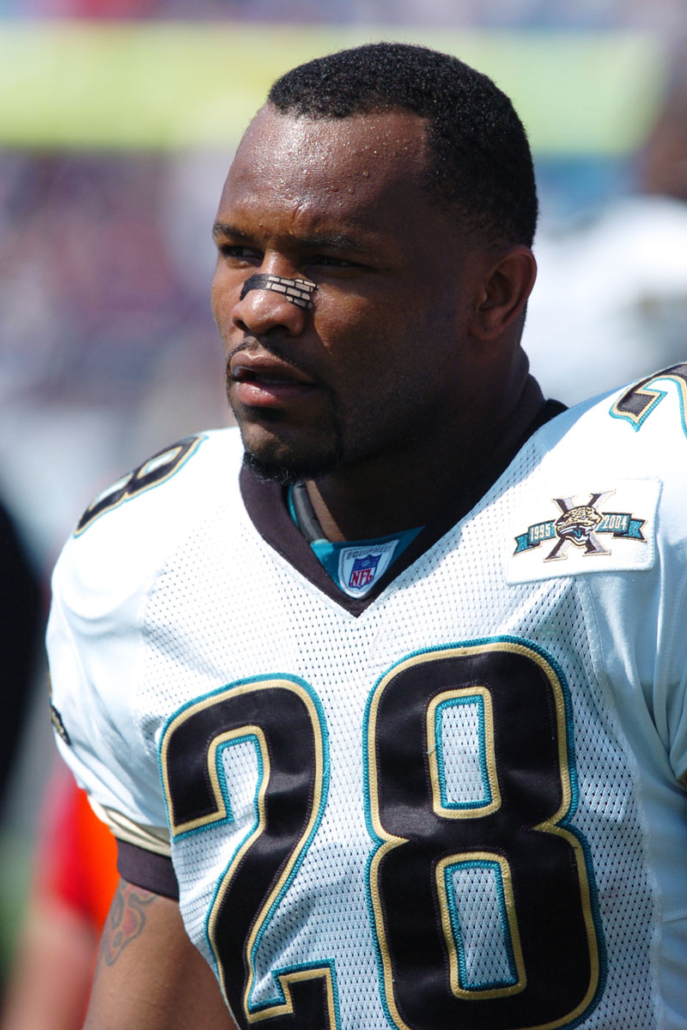 When I asked Hall of Famer Troy Polamalu what it was like to stand on the other side of the line from Fred Taylor, he paused and said, “I think he’s the best running back I ever faced.”
When I asked Hall of Famer Troy Polamalu what it was like to stand on the other side of the line from Fred Taylor, he paused and said, “I think he’s the best running back I ever faced.”